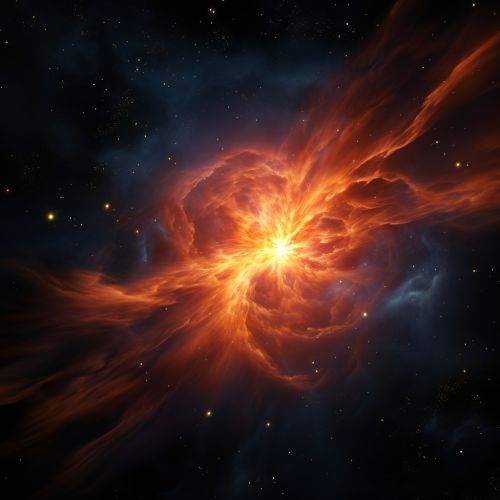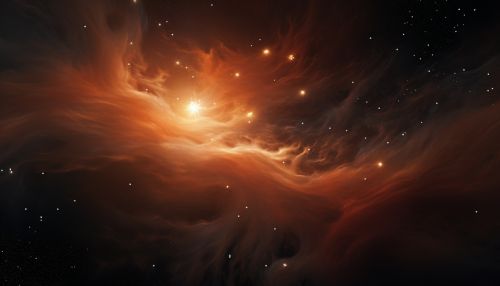Stellar Wind
Introduction
Stellar wind is a flow of gas ejected from the upper atmosphere of a star. It is analogous to the solar wind from the Sun. This outflow of plasma carries away angular momentum, thereby slowing the rotation of the star. Stellar winds are a common phenomenon in all types of stars, but their strength and the amount of material involved can vary greatly.
Stellar Wind Characteristics
Stellar winds are composed of plasma, a state of matter that consists of free-moving ions and electrons. The plasma is heated to high temperatures by nuclear reactions at the core of the star, and it escapes from the star's gravitational field due to its high kinetic energy. The speed of the stellar wind can vary from less than 10 km/s to more than 2000 km/s, depending on the type of star and its age.


Types of Stellar Winds
There are two main types of stellar winds: hot and cool. Hot stellar winds are found in high-mass stars, while cool stellar winds are associated with low-mass stars.
Hot Stellar Winds
Hot stellar winds are characterized by high temperatures (up to millions of degrees), high velocities (up to thousands of km/s), and low densities. They are driven by radiation pressure on spectral lines. The most famous example of a star with a hot stellar wind is Eta Carinae, one of the most massive stars in our Milky Way Galaxy.
Cool Stellar Winds
Cool stellar winds, on the other hand, have lower temperatures (thousands to tens of thousands of degrees), lower velocities (tens to hundreds of km/s), and higher densities. They are driven by pulsations, magnetic fields, and dust-driven winds. The Sun's solar wind is an example of a cool stellar wind.
Effects of Stellar Winds
Stellar winds have several effects on both the star itself and its surroundings. They carry away angular momentum, which can slow down the star's rotation. They also remove mass from the star, which can affect its evolution. In addition, stellar winds can interact with the interstellar medium, creating beautiful and complex structures known as astrospheres.
Stellar Wind Observations
Observations of stellar winds can provide valuable information about the stars themselves. For example, by studying the composition of a stellar wind, astronomers can learn about the processes occurring in the star's interior. In addition, observations of stellar winds can provide clues about the evolution of stars and the dynamics of the interstellar medium.
